Learning will make you happier, will make you smarter, will make you more confident and Believer.
Serves the psychiatric patient, families, friends and the psychiatrists
Learning will make you happier, will make you smarter, will make you more confident and Believer.
Chronic pain and insomnia are an unhealthy combination. According to the National Sleep Foundation, chronic pain disturbs the slumber of one in five Americans at least a few nights a week. Whether it’s from a bad back, arthritis, or headaches, chronic pain puts you in double jeopardy: the pain robs you of restful sleep and makes you more fatigued, and thus more sensitive to pain.
But you can start to break this vicious cycle.
“For chronic pain conditions, what you need is good sleeping habits from the beginning — things that will last,” says Dr. Padma Gulur, a pain medicine specialist at Harvard-affiliated Massachusetts General Hospital. That means relying on the brain’s natural sleep drive as much as possible.
Try “relaxing distraction”
Dr. Gulur recommends “relaxing distraction” to her patients. Some relaxation techniques use basic rhythmic breathing meditation; others focus on guided imagery, in which you imagine being in a calm, peaceful location. Find something that appeals to you and helps you fall asleep. You might look for these exercises on CD, or consider group or individual trainings or sleep education sessions.
Get your copy of Improving Sleep
Product Page – Improving Sleep When you wake up in the morning, are you refreshed and ready to go, or groggy and grumpy? For many people, the second scenario is all too common. This report describes the latest in sleep research, including information about the numerous health conditions and medications that can interfere with normal sleep, as well as prescription and over-the-counter medications used to treat sleep disorders. Most importantly, you’ll learn what you can do to get the sleep you need for optimal health, safety, and well-being.
For some people, chronic pain not only makes it harder to fall asleep, but can also interrupt sleep. Simply shifting position in bed can trigger pain from a back condition or arthritic knee.
One approach is to take your pain medication right before bed. Check with your doctor to be sure that fits into your treatment plan. If pain does wake you in the middle of the night, first try meditation, visualization, or whatever relaxing distraction you favor. But if it doesn’t work, getting up to read a book in a quiet room with low light can help you to get back to sleep. Avoid loud sounds and bright light (that means TVs, smartphones, tablets, and computers).
Staying on a regular sleep schedule is also important. Go to bed at the same time every night and, no matter how the night goes, rise the next day at the same time and remain awake until your planned sleep time. This helps to set your internal sleep clock and enhances the natural sleep drive.
To learn more ways to ensure that you get a good night’s sleep, buy Improving Sleep, a Special Health Report from Harvard Medical School.
Many people find that crossing several time zones makes their internal clocks go haywire. In addition to experiencing headaches, stomach upset, and difficulty concentrating, they may also suffer from fitful sleep.
But there’s no need to waste time riding out the effects of jet lag. Try these tips the next time you travel.
When you’re traveling shorter distances
If your destination is just one or two time zones away, it may be possible to wake up, eat, and sleep on your regular home schedule. At your destination, schedule appointments and activities for times when you would be alert at home.
When you’re traveling longer distances
Gradually switch before the trip. For several days before you leave, move mealtimes and bedtime incrementally closer to the schedule of your destination. Even a partial switch may help.
During the flight, drink plenty of fluids, but not caffeine or alcohol. Caffeine and alcohol promote dehydration, which worsens the symptoms of jet lag. They can also disturb sleep.
Switch your bedtime as rapidly as possible upon arrival. Don’t turn in until it’s bedtime in the new time zone.
Use the sun to help you readjust. If you need to wake up earlier in the new setting (you’ve flown west to east), get out in the early morning sun. If you need to wake up later (you’ve flown east to west), expose yourself to late afternoon sunlight.
If you’re traveling on short notice or you’re facing an especially stubborn case of jet lag, ask your doctor about a specially timed dose of melatonin or ramelteon, which can help shift your circadian rhythms. If all else fails, a short course of an over-the-counter or prescription sleep aid may do the trick.

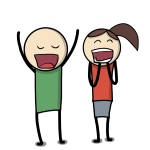
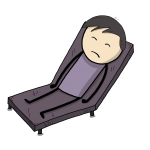
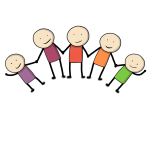
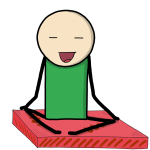
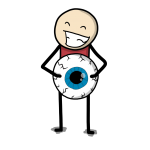
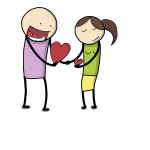

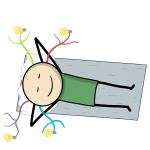


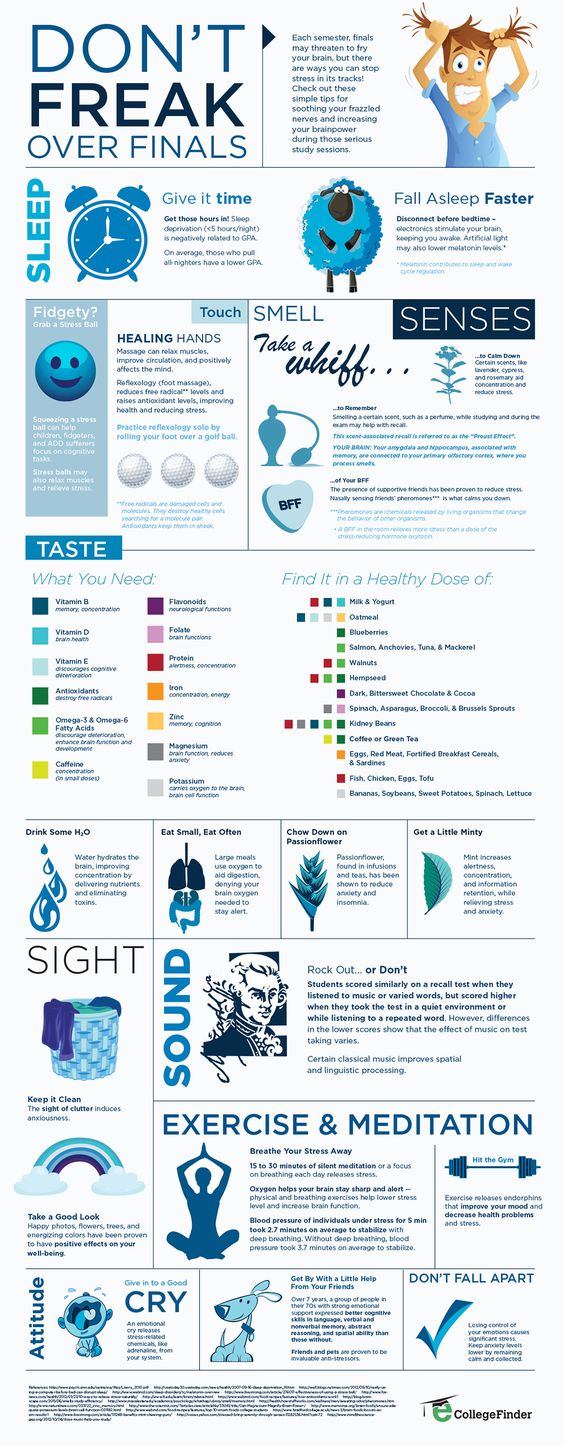

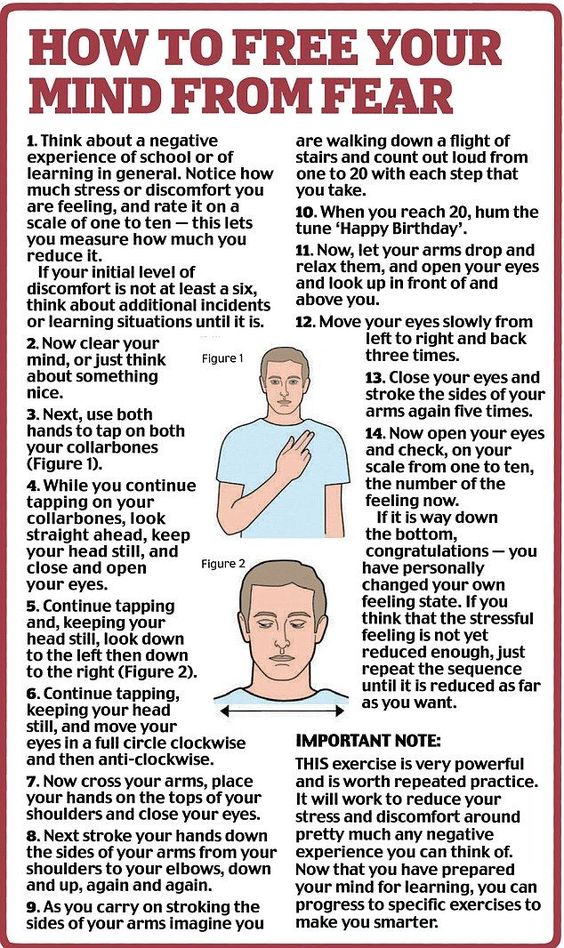


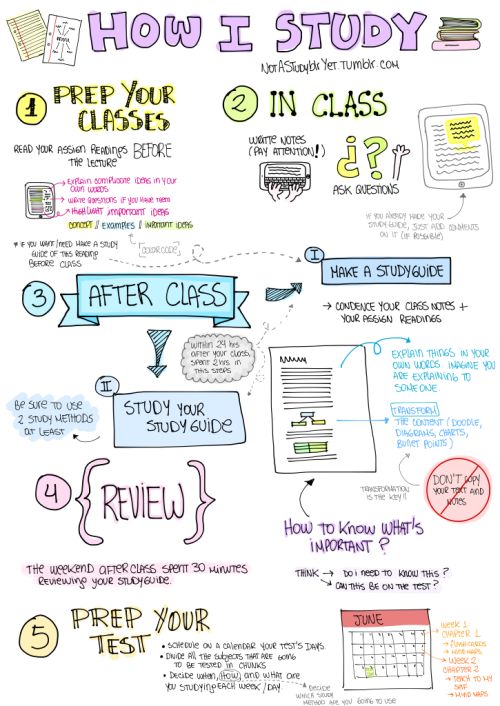
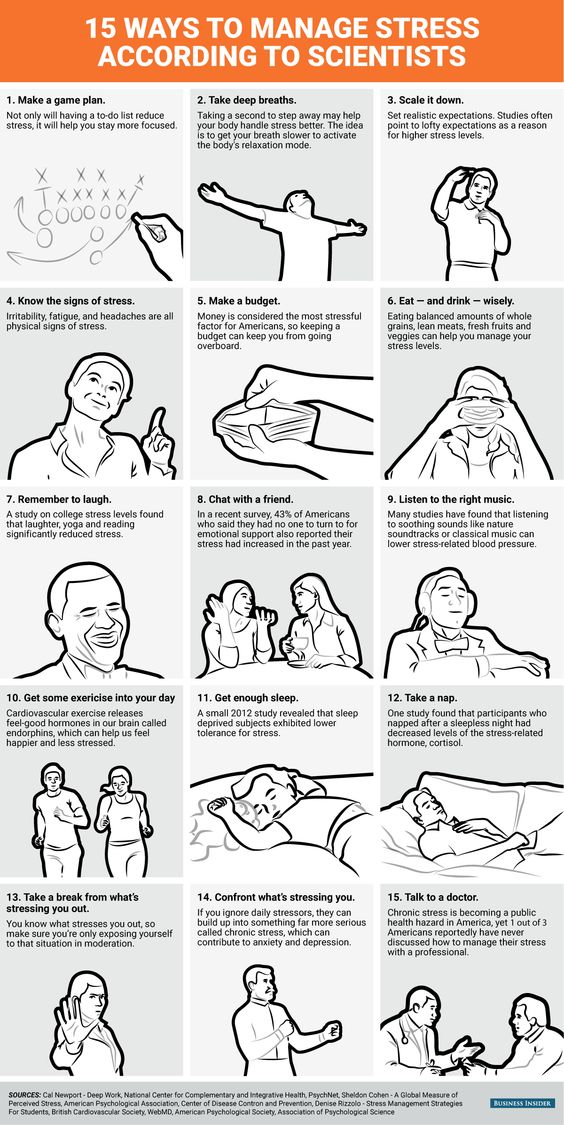
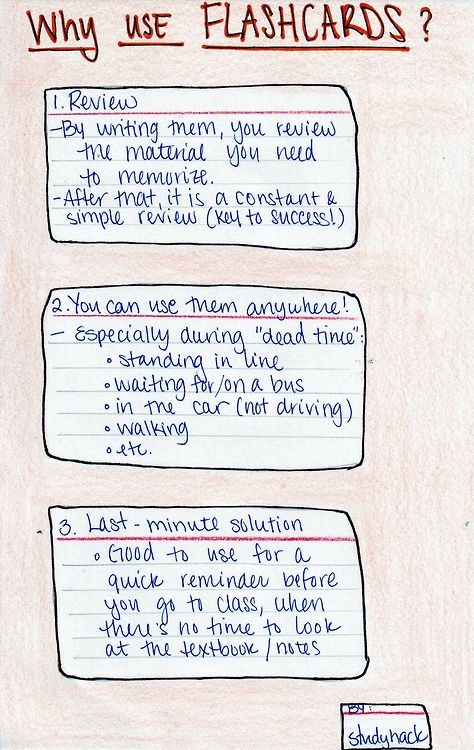




The Memory Palace is one of the most powerful memory techniques I know. It’s not only effective, but also fun to use — and not hard to learn at all.
The Memory Palace has been used since ancient Rome, and is responsible for some quite incredible memory feats. Eight-time world memory champion Dominic O’Brien, for instance, was able to memorize 54 decks of cards in sequence (that’s 2808 cards), viewing each card only once. And there are countless other similar achievements attributed to people using the Memory Palace technique or variations of it. Even in fiction, there are several references to the technique. In Thomas Harris’ novel Hannibal, for example, serial killer Hannibal Lecter uses Memory Palaces to store amazingly vivid memories of years of intricate patient records (sadly, it was left off the movie).
Of course, most of us are not in Dominic’s memory championship line of business (or in Hannibal’s line of business for that matter). But still, the Memory Palace technique is amazingly effective in all kinds of endeavors, such as learning a foreign language, memorizing a presentation you’re about to deliver, preparing for exams and many others — even if all you want is to jog your memory.
The Memory Palace technique is based on the fact that we’re extremely good at remembering places we know. A ‘Memory Palace’ is a metaphor for any well-known place that you’re able to easily visualize. It can be the inside of your home, or maybe the route you take every day to work. That familiar place will be your guide to store and recall any kind of information. Let’s see how it works.
First and foremost, you’ll need to pick a place that you’re very familiar with. The effectiveness of the technique relies on your ability to mentally see and walk around in that place with ease. You should be able to ‘be there’ at will using your mind’s eye only.
A good first choice could be your own home, for example. Remember that the more vividly you can visualize that place’s details, the more effective your memorization will be.
Also, try to define a specific route in your palace instead of just visualize a static scene. So, instead of simply picturing your home, imagine a specific walkthrough in your home. This makes the technique much more powerful, as you’ll be able to recall items in a specific order, as we’ll see in the next step.
Here are some additional suggestions that work well as Memory Palaces, along with possible routes:
Now you need to pay attention to specific features in the place you chose. If you picked a walkthrough in your home, for example, the first noticeable feature would probably be the front door.
Now go on and mentally walk around your Memory Palace. After you go through the door, what’s in the first room?
Analyze the room methodically (you may define a standard procedure, such as always looking from left to right, for example). What is the next feature that catches your attention? It may be the central table in the dining room, or a picture on the wall.
Continue making mental notes of those features as you go. Each one of them will be a “memory slot” that you’ll later use to store a single piece of information.
For the technique to work, the most important thing is to have the place or route 100% imprinted on your mind. Do whatever is necessary to really commit it to memory. If you’re a visual kind of person, you probably won’t have trouble with this. Otherwise, here are some tips that help:
Once you’re confident that the route is stamped on your mind, you’re set. Now you have your Palace, which can be used over and over again to memorize just about anything you want.
Now that you’re the master of your palace, it’s time to put it to good use.
Like most memory enhancement systems, the Memory Palace technique works with the use of visual associations. The process is simple: you take a known image — called the memory peg — and combine with the element you want to memorize. For us, each memory peg is a distinctive feature of our Memory Palace.
The memory pegging technique is the same one described in the article ‘Improve Your Memory by Speaking Your Mind’s Language‘, so if you haven’t read it yet, I highly advise you to do so.
As described in that article, there’s a ‘right way’ of doing visual associations:
Make it crazy, ridiculous, offensive, unusual, extraordinary, animated, nonsensical — after all, these are the things that get remembered, aren’t they? Make the scene so unique that it could never happen in real life. The only rule is: if it’s boring, it’s wrong.
Although we can use the technique to memorize tons of information, let’s start with something very simple: using our ‘Home’ Memory Palace to memorize a groceries list. Let’s suppose the first item in that list is ‘bacon’:
Mentally transport yourself to your Memory Palace. The first feature you see in your mind is your home’s front door. Now, in a ludicrous way, visually combine ‘bacon’ with the sight of your front door. How about giant fried bacon strips flowing out from underneath the door reaching for your legs, just like zombies in those B-movies? Feel the touch of the “bacon hands” on your legs. Feel the smell of darn evil bacon. Is that remarkable enough?
Now open the door and keep walking, following the exact same route you defined before. Look at the next distinctive feature, and associate it with the second item to be memorized. Suppose the next item is ‘eggs’ and the second feature is ‘picture of mother-in-law’. Well, at this point you already know what to do… The process is always the same, so just keep mentally associating images until there are no items left to memorize.
At this point, you are done memorizing the items. If you’re new to the technique, though, you’ll probably need to do a little rehearsal, repeating the journey at least once in your mind.
If you start from the same point and follow the same route, the memorized items will come to your mind instantly as you look at the journey’s selected features. Go from the beginning to the end of your route, paying attention to those features and replaying the scenes in your mind. When you get to the end of your route, turn around and walk in the opposite direction until you get to the starting point.
In the end, it’s all a matter of developing your visualization skills. The more relaxed you are, the easier it will be and the more effective your memorization will be.
What I like about the Memory Palace (and other pegging methods) is that it’s not only extremely effective, but also quite fun to learn and use.
With just a little bit of experience, the lists you memorize using the Memory Palace will stay fresh in your mind for many days, weeks or even more.
Also have in mind that you can create as many palaces as you want, and that they can be as simple or as elaborate as you wish to make them. Each of them is a “memory bank”, ready to be used to help you memorize anything, anytime.
Associating physical locations with mental concepts is the most powerful memory combination I know. Most other memory techniques (supposedly more sophisticated than the Memory Palace) are, at least in part, based on the concept of physical locations being used as memory pegs.
Have you already used Memory Palace or a similar technique? What do you think? Any opinions or testimonials to share?
Many patients with borderline personality disorder or other forms of moodiness are wrongly diagnosed as having bipolar disorder. On the other hand, it is simultaneously true that many patients with bipolar disorder (especially bipolar II disorder) continue to be misdiagnosed as having a depressive disorder. Because the treatment of depression and of bipolar disorder is very different, this rampant misdiagnosis is a tragedy.
I am amazed by how many patients I have diagnosed with bipolar disorder for the first time who had not been previously diagnosed as such, even those who were seeing a psychiatrist. And I’m not talking about the so called “Bipolar spectrum” — I’m talking about DSM-5 bipolar II disorder. Those should NOT be missed.
In a 2000 survey of 600 patients with bipolar disorder(Hirschfeld et al., 2003), the following key findings emerged:
It requires some skill to correctly interview the person and his/her family to identify bipolar disorder. Sometimes it takes a LOT of skill. Asking things like, “Have you ever felt on top of the world?” “Have you ever felt that you didn’t need to sleep or that you were full of energy?” and so on will identify only a fraction of the cases. For years I have been teaching medical students, residents, and fellows about how to methodically interview patients to identify bipolar disorder. A lot more attention needs to be paid to this issue. Patient’s lives are harmed significantly when clinicians fail to identify bipolar disorder.
When deciding whether to use lithium in a person with a bipolar disorder, we should systematically look for the following TEN factors in the Past, Present, and Future:
1. Adult (rather than an adolescent)
2. Later age of onset
3. Less than three prior episodes. (The problem is that many clinicians will try other treatments first and start lithium only after many episodes have already occurred.)
4. Mania-Depression-Interval pattern of episodes. (Mania followed by depression followed by a euthymic interval. As opposed to depression followed by mania.)
5. Fewer hospitalizations
6. Absence of rapid cycling (four or more episodes per year).
7. Good response to lithium in a first-degree relative
8. Classical mania (with only euphoria rather than with mixed features)
9. Absence of comorbid substance abuse
10. And, most important of all, the person takes the lithium and does not have unacceptable adverse effects.
Now, which side effects are most likely to make a person stop taking lithium? Interestingly, the commonest reasons for stopping lithium are not hypothyroidism, renal impairment or similar more serious adverse effects. The commonest reasons are…ready for them?…
We need to watch *specifically* for these three adverse effects. When they occur, an alarm bell should go off in our minds, reminding us to be careful because the person may stop taking the lithium.
It is very sad that the diagnosis of bipolar disorder continues to be frequently missed. Many persons with bipolar disorder continue to be wrongly diagnosed as having a depressive disorder. The consequences of this are horrible — years wasted in treatment with antidepressants (SSRIs, SNRIs, etc), “treatment-resistance,” development of rapid cycling, and lost years of patients’ lives. Not to mention the possibility of suicide.
This is an EMERGENCY in the field of mental health! No patient with bipolar disorder should go undiagnosed or misdiagnosed.
EVERY patient with a depressive episode must be asked specifically for a history of a hypomanic/manic episode. It does not naturally occur to us to do this, so we have to prompt or train ourselves to remember to do it.
Problems
1) The patient may report normal happiness (especially after having recovered from depression) as elevated mood;
2) Persons without bipolar disorder may have the same symptoms at different times in their lives;
3) Persons with bipolar disorder may not have every specific symptom you are asking about;
4) Patients may be suggestible and endorse symptoms when asked leading questions.
How to ask
So, how specifically should we ask the patient about whether they have ever had a manic or hypomanic episode?
Step 1: help the patient understand that you are talking about 3 different states (depression, normal, and mania/hypomania)
Step 2: help patient identify a specific episode (period of time) when he was manic. Preferably choose the MOST SEVERE episode because the symptoms will be more pronounced
Step 3: ask an open-ended question about what the symptoms were like during that period. Keep referring the patient back to THAT episode.
Step 4: ask follow up questions to identify and characterize all the symptoms
Step 5: if needed, ask if there was any other reason for these symptoms, and whether the symptoms were observable by others who knew the patient well
Additional steps
Consider calling one or more informants (family member, friend, colleague, etc) for additional history. Think broadly and creatively about this. Talk to the informants on the phone if they cannot come in.
If the diagnosis of bipolar disorder is not reliably ruled in or out at the initial evaluation, specifically plan to pursue this in subsequent visits by: using part of a follow up session to re-interview the patient, interviewing additional informants, obtaining previous records
How to organize your information about mania/ hypomania
Write down the history of mania obtained from the patient, informant, records, or your observations (i.e., all possible sources of information) on a SEPARATE sheet of paper in the H&P. By writing on a separate sheet, you can add more information to that sheet as it is obtained (with a new date) and can even insert a new sheet if needed.
Write down direct quotes as much as possible.
When further relevant history is obtained after the initial evaluation, do NOT write it in the progress notes (why?); write it as an addendum to the above mentioned sheet about bipolar disorder.
In the future, whenever a doubt occurs about whether or not the patient really has bipolar disorder or is only suspected to have bipolar disorder, look back at this sheet. Quickly re-reading the notes will make it clear whether or not the patient has had a manic episode.
• Persons with bipolar disorder have a greater lifetime prevalence of panic disorder than persons with major depressive disorder (21% vs. 10%).
• (For panic attacks (as opposed to panic disorder), the comorbidity is even greater. Up to 47% of persons with bipolar disorder have had at least one panic attack.)
• In fact, of the anxiety disorders that occur with bipolar disorder, panic disorder is the commonest. Panic ≥ social and specific phobias ≥ generalized anxiety ≥ posttraumatic stress ≥ obsessive-compulsive disorders.
• In a family study of bipolar disorder, almost all cases of panic disorder occurred in persons who had bipolar disorder.
• Bipolar disorder with panic disorder may actually be a distinct subtype of bipolar disorder.
• Females
• Family history of mood disorder
• Depression as the first episode of bipolar disorder
• (I would have predicted that persons with bipolar II disorder are more likely to have comorbid anxiety disorders, but that is not true; the prevalence is equal in bipolar I and bipolar II disorders.)
• Frequent depressive episodes
• Severe depressive episodes
• Rapid cycling
• Suicidality
• Other psychiatric comorbidities
• Longer time to remission
• First focus on stabilizing the bipolar disorder, then address treatment of remaining anxiety symptoms. Note: let’s follow this guideline even if the anxiety disorder manifested itself before the bipolar disorder did.
• While serotonergic antidepressants are used first-line for panic disorder, when it occurs along with bipolar disorder, they should probably be avoided if possible due to risk of worsening cycling.
• There is little specific research about treatment of panic disorder in persons who also have bipolar disorder, but what is available is summarized below.
• In a randomized, controlled clinical trial, quetiapine (started at 50 mg/day and titrated up to 300 mg/day) was shown to reduce panic attacks over 8 weeks (Sheehan et al., 2012).
• There is some reason to believe that valproate may work for panic disorder when it occurs with bipolar disorder for the following reasons:
a) In small, uncontrolled clinical trials, valproate has been found to be efficacious for panic disorder when it occurs alone (Woodman and Noyes, 1994) and for lactate-induced panic attacks (Keck et al., 1993). In my opinion, that valproate may work for panic disorder by itself makes me more likely to believe that it is a good choice when panic disorder occurs along with bipolar disorder.
b) However, we don’t have great direct evidence that valproate works well for panic disorder when comorbid with bipolar disorder. One study found valproate to reduce panic attacks in patients with bipolar disorder even after an antidepressant had been used (Perugi et al., 2010). Another very small and uncontrolled clinical trial found valproate to reduce panic attacks in a patients with bipolar II disorder even after an antidepressant had not worked (Baetz and Bowen, 1998). However, one large clinical trial did not find valproate to reduce panic attacks in this population over the short term at least (Sheehan et al., 2012).
c) I always like to look for “biological plausibility,” i.e., why would treatment A work for disorder X? We know that valproate increases activity of gamma-aminobutyric acid (GABA) that is the main inhibitory neurotransmitter in the brain. Benzodiazepines also work by increasing GABA activity.
d) Valproate has been shown in animal models to have antianxiety effects.
• In a randomized, controlled trial, risperidone was less (this is not a typo) efficacious than placebo in reducing anxiety symptoms over 8 weeks in patients with bipolar disorder and comorbid panic disorder (Sheehan et al., 2009).
• No specific research but based on clinical experience benzodiazepines may be efficacious in panic disorder when it occurs along with bipolar disorder.
• No specific research is available about cognitive-behavior therapy for treatment of panic disorder in patients with bipolar disorder. All we have is a small, uncontrolled study of using CBT for patients with panic disorder with or without subsyndromal symptoms of hypomania (Bowen and D’Arcy, 2003), which found that presence of these hypomanic symptoms did not prevent CBT from working for the panic disorder. I guess we can assume that that panic-specific CBT may be efficacious for panic disorder with bipolar disorder like it is for panic disorder alone. However, it requires special training to be able to skillfully deliver it.
1. Bipolar disorder with panic disorder has a worse prognosis, so this is an important topic! We should make sure we explicitly identify presence of this comorbidity.
2. If starting a mood stabilizer in these patients, at this time quetiapine or divalproex may be good first choices.
3. Risperidone is probably not a good choice (Sheehan et al., 2009). should be avoided if possible.
4. Antidepressants for the panic disorder should be avoided if possible. If they must be used, the bipolar disorder should be stabilized first.
5. Persons with bipolar disorder and panic disorder are more likely to be lamotrigine responders than lithium responders (Passmore et al., 2003).
6. If the person is already on another mood stabilizer, I wouldn’t change the mood stabilizer automatically. I suggest carefully charting both the mood episodes and the panic attacks separately before planning changes to medications and conducting medication trials.
Which medications have evidence from randomized, controlled trials for efficacy specifically in bipolar II disorder?
Studies are rarely conducted in patients with bipolar II disorder alone. In most studies, patients with bipolar I and bipolar II disorder are combined AND commonly the results for patients with bipolar II disorder are not reported separately.
First line treatment: quetiapine
Second line treatments: lithium, lamotrigine, divalproex, lithium or divalproex + antidepressants, lithium + divalproex, atypical antipsychotic + antidepressants
No randomized controlled trials available.
First line: lithium, lamotrigine, quetiapine
Second line: divalproex; lithium or divalproex or atypical antipsychotic + antidepressant; adjunctive quetiapine; adjunctive lamotrigine; combination of two of: lithium, divalproex, or atypical antipsychotic
Rapid cycling is a stage in bipolar disorder and is defined as having four or more episodes (mania, hypomania, depression) in a 12 month period.
Note: Two episodes of the same type (e.g., mania, hypomania, depression) would be considered separate episodes only if there was a period of at least two months between the two episodes during which the patient did not meet the diagnostic criteria for that type of episode. Unless, the patient switched to an episode of opposite polarity.
Lifetime prevalence of rapid cycling ranges from 26% to 43%. That is, about one third of patients with bipolar disorder will develop rapid cycling at some time in their lives.
One year prevalence of rapid cycling ranges from 5% to 33%. That is, about half of the patients who develop rapid cycling (i.e., about one sixth of patients), will have rapid cycling during a given year.
However, it is common for clinicians to not explicitly identify that the patient has rapid cycling.
Rapid cycling has important effects on the treatment and prognosis of bipolar disorder.
It is associated with the following undesirable features:
1. Greater prevalence of drug and alcohol abuse
2. Greater suicidality
The longer-term outcome of rapid cycling varies greatly.
Rapid cycling is more likely to occur in patients who:
1. Are female
2. Had an earlier age of onset
3. Have had a longer course of illness
4. Abuse substances
5. Have hypothyroidism
6. Have been treated with antidepressants
However, association does not mean causation. That is, these factors are not necessarily the cause of the rapid cycling.
Rapid cycling does not seem to run in families, suggesting that its causes are not primarily genetic. It is usually a temporary stage rather than a stable diagnosis for that patient. That is, it is not a subtype of bipolar disorder.
1. Check thyroid function
2. Check for substance abuse (history, history from friends and family, urine drug screen)
1. Educate the patient and family about rapid cycling.
2. Educate the patient about the importance of trying to fully control the cycling course of the illness.
3. If possible, taper off any antidepressant that may be on board.
4. Use mood stabilizers that are specifically known to be efficacious in the rapid cycling stage of bipolar disorder. For example, lithium is less efficacious in patients with rapid cycling than in those without it.
Yatham et al. Canadian Network for Mood and Anxiety Treatments (CANMAT) and International Society for Bipolar Disorders (ISBD) collaborative update of CANMAT guidelines for the management of patients with bipolar disorder: update 2013. Bipolar Disord. 2013 Feb;15(1):1-44. PubMed PMID: 23237061.
Young et al. Quetiapine monotherapy in bipolar II depression: combined data from four large, randomized studies. Int J Bipolar Disord. 2013 Jul 4;1:10. PubMed PMID: 25505677. PubMed Central PMCID: PMC4230312.
Copyright 2016, Rajnish Mago, MD. All rights reserved. May not be reproduced in any form without express written permission.
Disclaimer: The content on this website is provided as general education for medical professionals. It is not intended or recommended for patients or other laypersons, or as a substitute for medical advice, diagnosis, or treatment. Patients must always consult a qualified health care professional regarding their diagnosis and treatment. Healthcare professionals should always check this website for the most recently updated information.
(If you are not already signed up for FREE tips, news, and updates from this website, please enter your email address at the bottom of this page. Don’t miss out on this opportunity!)
The US medical system switched from ICD-9-CM to ICD-10-CM on October 1, 2015. For billing and other purposes, clinicians in the US *must* now use the ICD-10-CM codes.
ICD stands for International Classification of Diseases, the classification system developed by the World Health Organization (WHO). CM stands for Clinical Modification — the ICD modified for use in the US.
A key difference from the ICD-9-CM coding is that with ICD-10-CM, specification of subtype, severity, or other detail is usually required in order to determine the last digit of the code.
The ICD-10-CM codes for all mental disorders are given in the DSM-5. However, if you don’t have a copy, or even if you do, it is easy to look up the ICD-10-CM code for any disorder at
When you search for a DSM-5 diagnosis at that site, you will find the different codes that can be used for that category depending on subtype, severity, etc. For example, a search of the CMS site for the diagnosis of “major depressive disorder” results in the following:
Note: It is an easy method for looking up what the ICD-10 code is, but we have to enter the name of the mental disorder. Unfortunately it does not search by symptom, e.g.., “depression.” Interestingly, I tested this and part of the name of the disorder does work. E.g., “depressive,” “bipolar,” “major,” etc).
Why are all the codes not simply consecutive? That is because the diagnostic categories in ICD-10, though similar to those in DSM-5, are not exactly the same. The numbering is based on how the diagnostic categories are grouped in ICD-10 (see below on this page for how ICD-10 is organized), not on how they are grouped in DSM-5
However, in the US, we have to work the other way around: start with the DSM-5 diagnostic category and know what the ICD-10-CM code for that condition is. For example, here are the ICD-10-CM codes for a few commonly diagnosed mental disorders. (Note that ICD-10-CM codes for most, but not all, mental disorders start with the letter F. Diagnoses with codes starting with F are those that correspond to chapter 5 of ICD-10; see below)
Autism Spectrum Disorder F84.0
Attention-Deficit/Hyperactivity Disorder
Predominantly inattentive presentation F90.0
Predominantly hyperactive/impulsive presentation F90.1
Combined presentation F90.2
Generalized Anxiety Disorder F41.1
Bipolar I Disorder
Current or most recent episode manic F31.1
Current or most recent episode depressed F31.3
Bipolar II Disorder F31.81
Major Depressive Disorder
Single episode F32
Recurrent episode F33
Posttraumatic Stress Disorder F43.10
Schizophrenia F20.9
Schizoaffective Disorder
Bipolar type F25.0
Depressive type F25.1
In case you are interested, here is the basic organization of Chapter 5 of ICD-10, Mental, Behavioral and Neurodevelopmental disorders (F01-F99):
F01-F09 Mental disorders due to known physiological conditions
F10-F19 Mental and behavioral disorders due to psychoactive substance use
F20-F29 Schizophrenia, schizotypal, delusional, and other non-mood psychotic disorders
F30-F39 Mood [affective] disorders
F40-F48 Anxiety, dissociative, stress-related, somatoform and other nonpsychotic mental disorders
F50-F59 Behavioral syndromes associated with physiological disturbances and physical factors
F60-F69 Disorders of adult personality and behavior
F70-F79 Intellectual disabilities
F80-F89 Pervasive and specific developmental disorders
F90-F98 Behavioral and emotional disorders with onset usually occurring in childhood and adolescence
F99 Unspecified mental disorder
Allow us to send you occasional FREE clinically-relevant tips, updates, and news related to mental health issues by signing up below.
Your confidentiality and privacy are 100% guaranteed. We will never reveal, give, lease or sell your name or email address in any way whatsoever.
Modafinil (US brand name Provigil® and generic) is a wakefulness promoting agent. Here is key information about this medication.
To improve wakefulness in adult patients with narcolepsy, obstructive sleep apnea (OSA), or shift work disorder (SWD)
1. Adults
Narcolepsy or OSA: 200 mg once daily in the morning
Shift work disorder: 200 mg once a day taken approximately one hour prior to start of the work shift
2. Geriatric patients
Consider lower dose
3. Patients with severe hepatic impairment
Reduce to half the recommended dose
Tablets: 100 mg and 200 mg (scored)
Please refer to Prescribing Information (see link below) for complete discussion of dosage, administration, warnings and precautions, contraindications, etc.
Modafinil is an inhibitor of CYP 2C19.
It is also an inducer of CYP 1A2 and CYP 3A4
To screen for Obstructive Sleep Apnea, we need to check for multiple factors. The STOP-Bang questionnaire looks at these multiple factors. A link to information about the questionnaire is provided below.
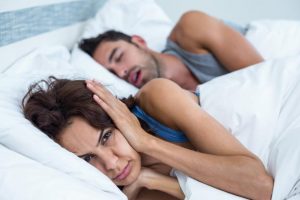
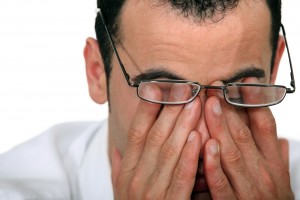
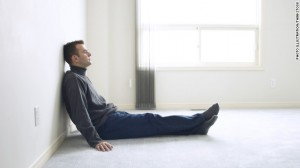
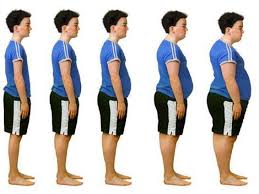
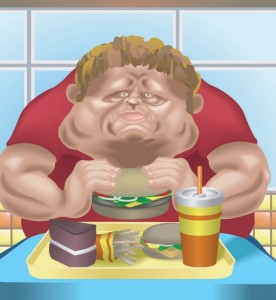
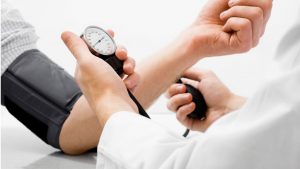
Many of the factors to be considered in screening for sleep apnea are combined into a questionnaire called the STOP-Bang Questionnaire that is then scored and the degree of risk of sleep apnea can be determined.
Sleep apnea is another one of those things that we all are failing to diagnose. But it has serious consequences and specific treatments available. To screen patients for sleep apnea, we do several things including assessing for daytime sleepiness/ non-refreshing sleep, asking about snoring, assessing for a short and thick neck (including asking for collar size), asking for reports from a bed partner about thrashing or breathing stopping, and so on.
A free app, SleepBot, records sound all night long. The person starts the app when he goes to sleep and checks off “Record Sleep” in the bottom right corner of the home screen (see photo below).
The app remains on all night and prevents the phone from going to sleep automatically. In the morning, after punching in the end of the sleep, the person can go to “Logs” to see the sounds that occurred during the night (see photo below). The peaks that rise above the horizontal dotted line are the ones to look at. On tapping one of those peaks, the person can hear the sound that occurred at that time. Easy!
It will probably be helpful if you try it on yourself before you suggest it to your patients. SleepBot is available FREE for both iOS and Android. Their website is http://mysleepbot.com/
In the general population, 1 in 4 males and 1 in 10 females have at least mild obstructive sleep apnea. What about moderate or greater severity sleep apnea? In the general population, it occurs in 1 in 9 males and 1 in 20 females. (Source: stopbang.ca.) These are huge numbers!
Are we identifying these persons? About 82% of men and 92% of women with moderate or greater severity of sleep apnea are undiagnosed. This is unacceptable!
The STOP-Bang questionnaire is routinely used by sleep medicine experts to screen patients for obstructive sleep apnea. However, it is rarely used by mental health professionals. This is unfortunate because sleep apnea is often present in patients with mental health problems and the great majority of cases are missed!
The questionnaire is very simple to use and is free. It combines many of the clinical features that are used to screen persons for possible obstructive sleep apnea and then provides a score indicating the probability that the person has sleep apnea. If you start using the questionnaire right away, this will be a big step in the right direction for identifying among your patients those who may have sleep apnea.
STOP-Bang is an acronym as follows:
Snoring?
Tired? (Tired, Fatigued, or Sleepy during the daytime)
Observed? (Stop Breathing or Choking/Gasping during your sleep)
Pressure? (High blood pressure)
Body Mass Index
Age
Neck size
Gender
You can see the actual questionnaire, how it is scored, and how to interpret it at the links below.
(Disclaimers: The STOP-Bang Questionnaire is owned by University Health Network, Canada.
Use of the questionnaire is a tool and does not guarantee that all persons with sleep apnea will be identified.)
The FDA issued a warning on May 3, 2016 about aripiprazole stating that “compulsive or uncontrollable urges to gamble, binge eat, shop, and have sex have been reported with the use of aripiprazole (Abilify®, Abilify Maintena®, Aristada®, and generics). These uncontrollable urges were reported to have stopped when the medicine was discontinued or the dose was reduced. These impulse-control problems are rare, but they may result in harm to the patient and others if not recognized.”
The FDA recommends that “health care professionals should make patients and caregivers aware of the risk of these uncontrollable urges when prescribing aripiprazole, and specifically ask patients about any new or increasing urges while they are being treated with aripiprazole. Closely monitor for new or worsening uncontrollable urges in patients at higher risk for impulse-control problems. These include those with a personal or family history of obsessive-compulsive disorder, impulse-control disorder, bipolar disorder, impulsive personality, alcoholism, drug abuse, or other addictive behaviors. Consider reducing the dose or stopping the medicine if such urges develop.”
Olanzapine (US brand name Zyprexa® and generic) is a second-generation (atypical) antipsychotic. Here is basic information about this medication.
1. As oral formulation for:
a. Schizophrenia in adults and adolescents
b. Manic or mixed episodes associated with bipolar I disorder in adults and adolescents (ages 13-17 )
c. Manic or mixed episodes associated with bipolar I disorder in adults (as an adjunct to valproate or lithium)
2. As Intramuscular injection for:
Acute agitation associated with schizophrenia and bipolar I mania in adults
3. Olanzapine in combination with fluoxetine for:
a. Depressive episodes associated with bipolar I disorder in adults
b. Depressive episodes associated with bipolar I disorder in children and adolescents (ages 10-17)
c. Treatment-resistant depression in adults
Note: Olanzapine is not approved for the treatment of dementia-related psychosis in elderly due to increased risk of death and cerebrovascular accidents.
1. Schizophrenia (adults)
Start at 5–10 mg orally once daily orally
Target: 10 mg/day within several days
2. Schizophrenia (adolescents)
Start at 2.5–5 mg orally once daily
Target: 10 mg/day
3. Bipolar I disorder (manic or mixed episodes) in adults
Start at 10 or 15 mg orally once daily
4. Bipolar I disorder (manic or mixed episodes) in adolescents
Start at 2.5–5 mg orally once daily
Target: 10 mg/day
5. Bipolar I disorder (manic or mixed episodes) with lithium or valproate in adults
Start at 10 mg orally once daily
6. Agitation associated with schizophrenia and bipolar I mania in adults
10 mg Intramuscular (IM) injection (5 mg or 7.5 mg when clinically warranted).
Assess for orthostatic hypotension prior to subsequent dosing (max. 3 doses 2-4 hrs apart)
7. Depressive episodes associated with bipolar I disorder in adults (in combination with fluoxetine)
Start at 5 mg of oral olanzapine and 20 mg of fluoxetine orally once daily
8. Depressive episodes associated with bipolar I disorder in children and adolescents (in combination with fluoxetine)
Start at 2.5 mg of oral olanzapine and 20 mg of fluoxetine orally once daily
9. Treatment resistant depression in adults (in combination with fluoxetine)
Start at 5 mg of oral olanzapine and 20 mg of fluoxetine orally once daily
General Instructions (from Prescribing Information)
1. Lower starting dose is recommended in debilitated or pharmacodynamically sensitive patients or patients with predisposition to hypotensive reactions, or with potential for slowed metabolism.
2. Olanzapine may be given without regard to meals.
Olanzapine and Fluoxetine in combination
1. Dosage adjustments, if indicated, should be made with the individual components according to efficacy and tolerability.
2. Olanzapine monotherapy is not indicated for the treatment of depressive episodes associated with bipolar I disorder or treatment resistant depression.
3. Safety of co-administration of doses above 18 mg olanzapine with 75 mg fluoxetine has not been evaluated.
4. 50 mg fluoxetine has not been evaluated in children and adolescents ages 10 to 17.
Please refer to Prescribing Information (see link below) for complete discussion of dosage, administration, warnings and precautions, contraindications, etc.
Tablets (Zyprexa® and generic): 2.5, 5, 7.5, 10, 15, 20 mg
Orally disintegrating tablets (Zyprexa Zydis® and generic): 5, 10, 15, 20 mg
Intramuscular injection (Zyprexa® and generic): 10 mg vial
Paliperidone extended-release (US brand name Invega® and generic) is a second-generation (“atypical”) antipsychotic.
1. Treatment of schizophrenia in adults and adolescents (ages 12-17)
2. Treatment of schizoaffective disorder in adults as monotherapy and as an adjunct to mood stabilizers and/or antidepressants.
A. Schizophrenia (adults)
Initial: 6 mg/day
Recommended: 3 – 12 mg/day
Maximum: 12 mg/day
Recommended dose increments: 3 mg/day at intervals of more than 5 days after clinical assessment
Dose increases above 6 mg/day should be made only after clinical reassessment and generally should occur at intervals of more than 5 days
B. Schizophrenia (adolescents < 51 kg)
Initial: 3 mg/day
Recommended: 3 – 6 mg/day
Maximum: 6 mg/day
Recommended dose increments: 3 mg/day at intervals of more than 5 days after clinical assessment
C. Schizophrenia (adolescents ≥ 51 kg)
Initial: 3 mg/day
Recommended: 3 – 12 mg/day
Maximum: 12 mg/day
Recommended dose increments: 3 mg/day at intervals of more than 5 days after clinical assessment
d. Schizoaffective Disorder (adults)
Initial: 6 mg/day
Recommended: 3 – 12 mg/day
Maximum: 12 mg/day
Recommended dose increments: 3 mg/day at intervals of more than 4 days after clinical assessment
Paliperidone should be administered once daily. Tablets should be swallowed whole and should not be chewed, divided, or crushed.
Tablets: 1.5 mg, 3 mg, 6mg, and 9 mg
Please refer to Prescribing Information (see link below) for complete discussion of dosage, administration, warnings and precautions, contraindications, etc.
Risperidone (US brand name Risperdal® and generic) is a second-generation (“atypical”) antipsychotic. Here is basic information about this medication.
1. Treatment of schizophrenia
2. As monotherapy or adjunctive therapy with lithium or valproate, for the treatment of acute manic or mixed episodes associated with Bipolar I Disorder
3. Treatment of irritability associated with autistic disorder
Recommended daily dosage:
Schizophrenia (adults)
Initial dose: 2 mg
Target dose: 4–8 mg
Effective dose range: 4–16 mg
Schizophrenia (adolescents)
Initial dose: 0.5 mg
Target dose: 3 mg
Effective dose range: 1–6 mg
Bipolar mania (adults)
Initial dose: 2–3 mg
Target dose: 1–6 mg
Effective dose range: 1–6 mg
Bipolar mania (children and adolescents)
Initial dose: 0.5 mg
Target dose: 1–2.5 mg
Effective dose range: 1–6 mg
Irritability associated with autistic disorder (weight <20 kg)
Initial dose: 0.25 mg
Target dose: 0.5 mg
Effective dose range: 0.5–3 mg
Irritability associated with autistic disorder (weight ≥20 kg)
Initial dose: 0.5 mg
Target dose: 1 mg
Effective dose range: 0.5–3 mg
Tablets (Risperdal® and generic): 0.25 mg, 0.5 mg, 1 mg, 2 mg, 3 mg, 4 mg
Oral solution (Risperdal® and generic): 1 mg/mL
Orally disintegrating tablets (Risperdal M-tab® and generic): 0.5 mg, 1 mg, 2 mg, 3 mg, 4 mg
Please refer to Prescribing Information (see link below) for complete discussion of dosage, administration, warnings and precautions, contraindications, etc.
Risperdal Consta® is a long-acting injectable formulation of risperidone, a second-generation (“atypical”) antipsychotic. Here is basic information about this medication.
The recommended dose for the treatment of schizophrenia is 25 mg IM every 2 weeks.
The maximum dose is 50 mg IM every 2 weeks.
Vial kits: 12.5 mg, 25 mg, 37.5 mg, and 50 mg
The kit includes:
Paliperidone palmitate (Invega Trinza®) is an extended-release injectable second-generation (“atypical”) antipsychotic which can be administered once every 3 months. Here is basic information about this medication.
Schizophrenia after adequate treatment with 1-month paliperidone palmitate extended-release (Invega Sustenna®) for at least four months.
The dose of 3-month paliperidone palmitate (Invega Trinza®) will depend on the last dose of 1-month paliperidone palmitate extended-release (Invega Sustenna) that the patient was on, as follows:
| Last dose of 1-month paliperidone palmitate |
Starting dose of 3-month paliperidone palmitate |
| 78 mg | 273 mg |
| 117 mg | 410 mg |
| 156 mg | 546 mg |
| 234 mg | 819 mg |
Extended-release injectable suspension: 273 mg, 410 mg, 546 mg, 819 mg
It is extremely important that prescriber’s review the full prescribing information before prescribing 3-month paliperidone palmitate (Invega Trinza)
Paliperidone palmitate (Invega Sustenna®) is an extended-release injectable second-generation (“atypical”) antipsychotic. Here is basic information about this medication.
A. Schizophrenia
Initiation (IM deltoid): Administer 234 mg on day 1; 156 mg on day 8
Monthly maintenance dose (IM deltoid or gluteal): 39–234 mg (administered 5 weeks after first injection)
Maximum monthly dose: 234 mg
(Recommended maintenance dose for schizophrenia is 117 mg, though some patients may benefit from higher or lower doses within available strengths)
B. Schizoaffective disorder
Initiation (IM deltoid): 234 mg on day 1; 156 mg on day 8
Monthly maintenance dose (IM deltoid or gluteal): 78–234 mg (based upon tolerability and efficacy)
Maximum monthly dose: 234 mg
C) Use in specific population: patients with renal impairment
Mild renal impairment (creatinine clearance 50-80 mL/min): Administer 156 mg on treatment day 1 and 117 mg one week later, both on deltoid muscle. Follow with monthly injections of 78 mg in either the deltoid or gluteal muscle.
Moderate to severe renal impairment (creatinine clearance<50 mL/min): Invega Sustenna® is not recommended
Extended-release injectable suspension: 39 mg, 78 mg, 117 mg, 156 mg, and 234 mg
Please refer to Prescribing Information (see link below) for complete discussion of dosage, administration, warnings and precautions, contraindications, etc.
Extended Release Olanzapine (Zyprexa Relprevv®) is a long-acting, second-generation (atypical), injectable antipsychotic. Here is basic information about this medication.
Schizophrenia
Recommended dosing of extended release olanzapine based on correspondence to oral olanzapine doses
A. First 8 weeks of treatment
a) Target oral dose 10 mg/day: 210 mg/2 weeks or 405 mg/4 weeks
b) Target oral dose 15 mg/day: 300 mg/2 weeks
c) Target oral dose 20 mg/day: 300 mg/2 weeks
B. Maintenance dose after 8 weeks
a) Target oral dose 10 mg/day: 150 mg/2 weeks or 300 mg/4 weeks
b) Target oral dose 15 mg/day: 210 mg/2 weeks or 405 mg/4 weeks
c) Target oral dose 20 mg/day: 300 mg/2 weeks
Note: Zyprexa Relprevv is not approved for the treatment of dementia related psychosis in elderly due to increased risk of death and cerebrovascular accidents.
General Instructions
1. Zyprexa Relprevv® is intended for deep intramuscular gluteal injection only and should not be administered intravenously or subcutaneously.
2. Establish tolerability with oral olanzapine prior to initiating treatment.
3. Must be suspended only in the diluent provided in the convenience kit.
4. Use in specific populations (including renal and hepatic impaired, and pediatric population) has not been studied.
Please refer to Prescribing Information (see link below) for complete discussion of dosage, administration, warnings and precautions, contraindications, etc.
Powder for suspension (for IM use only): 210 mg/vial, 300 mg/vial, and 405 mg/vial
Haldol® Decanoate is a brand name of a depot formulation of haloperidol which is a first-generation (“typical”) antipsychotic. Here is basic information about this medication.
Treatment of schizophrenic patients who require prolonged parenteral antipsychotic therapy
A. Initial dosage (given by deep IM injection every month)
Switchover from oral dose to haloperidol decanoate can be achieved by using the initial dose that is 10-20 times the daily oral dose in haloperidol equivalents.
a) In elderly, debilitated, and patients stabilized on low dose (up to 10 mg/day) of oral haloperidol
Administer 10-15 times the daily oral dose
b) In patients stabilized on high oral dose or who have become tolerant to the oral medication
Administer 20 times the daily oral dose
Maximum initial dosage can not exceed 100 mg. If the calculated dose after conversion exceeds 100 mg, then 100 mg may be administered immediately followed by remaining dose in 3-7 days.
B. Maintenance dose
May be titrated upwards or downwards based upon therapeutic response. Usual maintenance dose is 10-15 times the daily oral dose.
Injection (Haldol® Decanoate and generic): 50 mg/mL and 100 mg/mL
Please refer to Prescribing Information (see link below) for complete discussion of dosage, administration, warnings and precautions, contraindications, etc.

Ziprasidone (US brand name Geodon® and generic) is a second-generation (“atypical”) antipsychotic.
A. As an oral formulation
1. Schizophrenia
2. Acute treatment as monotherapy of manic or mixed episodes associated with bipolar I disorder
3. Maintenance treatment of bipolar I disorder as an adjunct to lithium or valproate
B. As an intramuscular injection
Acute treatment of agitation in schizophrenic patients
Schizophrenia
Initial: 20 mg twice daily
Dose may be adjusted at an interval of 2 or more days
Maximum: 80 mg twice daily
Acute treatment of manic/mixed episodes of bipolar I disorder
Initial: 40 mg twice daily
Increase to 60 mg or 80 mg twice daily on day 2
Maximum: 80 mg twice daily
Maintenance treatment of bipolar I disorder as an adjunct to lithium or valproate
40–80 mg twice daily
Acute treatment of agitation associated with schizophrenia (intramuscular administration)
10 mg every 2 hours or 20 mg every 4 hours, up to a maximum of 40 mg/day
Capsules (Geodon® and generic): 20 mg, 40 mg, 60 mg, and 80 mg
Intramuscular injection (Geodon®): 20 mg/mL single-use vials
Please refer to Prescribing Information (see link below) for complete discussion of dosage, administration, warnings and precautions, contraindications, etc.
Lurasidone or Latuda® is a second-generation antipsychotic, manufactured by Sunovion and introduced in the US in 2010 for the acute treatment of schizophrenia.
Note: This page and its related pages contain the full text of the chapter on lurasidone (Latuda) in my book, The Latest Antidepressants. This webpage will always have the most up-to-date version of that chapter.
1. Acute treatment of schizophrenia (2010)
2. Bipolar I depression – monotherapy
3. Bipolar I depression – adjunct to lithium or valproate
Schizophrenia
Starting Dose: 40 mg per day
Recommended Dose: 40 mg to 160 mg per day
Bipolar Depression
Staring Dose: 20 mg per day
Recommended Dose: 20 mg to 120 mg per day
Important Instructions
1. Lurasidone should be taken with food (at least 350 calories).
2. Recommended starting and maximum dose is 20 mg/day and 40 mg/day respectively for patients with moderate and severe renal impairment.
3. The maximum recommended dose is 80 mg per day and 40 mg per day in moderate and severe hepatic impairment respectively.
4. Concomitant Use of a Moderate CYP3A4 inhibitor (e.g., diltiazem): Lurasidone dose should be reduced to half of the original dose level. Recommended starting dose is 20 mg per day. Maximum recommended dose is 80 mg per day.
5. Concomitant Use of a Moderate CYP3A4 Inducer: It may be necessary to increase the dose of Lurasidone.
6. Geriatric use: Do not use lurasidone in dementia-related psychosis. Also, it is unknown whether dose adjustment is necessary for elderly patients.
Tablets: 20 mg, 40 mg, 60 mg, 80 mg, 120 mg
Please refer to Prescribing Information (see link below) for complete discussion of dosage, administration, warnings and precautions, contraindications, etc.
I wish we would stop calling them “atypical” antipsychotics, for reasons that I have argued in a letter to the editor (Mago, R, Kipnis, D: Atypicals are really typicals now. Psychiatry 2006;3:20-21.)
The reason lurasidone was included in my book on the “latest” antidepressants even though it was introduced in 2010 is because it has more recently been shown to be efficacious for bipolar depression.
What are the FDA indications for lurasidone?
Note: no mania study has been done, I think because many antimanic agents already available and bipolar depression was where the “unmet need” was.
What is the half-life of lurasidone and why does that matter?
Since the half-life of lurasidone is 18 hours, it can be prescribed in once-a-day dosing, which is more convenient and hence better for adherence.
Aripiprazole has a half-life of 72 hours, which has pros and cons. If a person develops an adverse effect on aripiprazole, it takes a longer time for the adverse effect to subside, even if the aripiprazole is stopped. On the other hand, I just had a patient who had akathisia on lurasidone. We stopped the lurasidone and the akathisia was markedly better within a day.
Lurasidone must be taken with food
An important thing to remember is that the maximum concentration of lurasidone is reduced by half (i.e., a lot) if it is not taken with food.
The patient may ask: can I take it with a small snack? The answer is that it depends on what your definition of a “small snack” is! The manufacturer recommends that lurasidone be taken with at least 350 calories of food. Whether that food is high fat or low fat does not matter.
What dose of lurasidone should I prescribe?
The standard recommendation is to start at 40 mg, once a day. However, patients with bipolar depression may be more sensitive to adverse effects than patients with schizophrenia. Therefore, it may be wise to start with 20 mg/day in patients with bipolar depression. The dose can be gradually increased to a maximum of 160 mg/day. Note: when lurasidone was initially introduced, the recommended maximum dose was 80 mg/day; this was later changed to 160 mg/day.
Lurasidone is available in a range of pill sizes: 20 mg, 40 mg, 60 mg, 80 mg, and 120 mg. However, if you start with a 20 mg pill, keep in mind that you can only give the patient a prescription for 30 pills. There are “quantity limitations” on the number of pills the person can get per month. This makes it a bit inconvenient to increase to 40 mg/day after a few days. Isn’t it better to prescribe 40 mg pills, but ask the patient to start with half pill per day for a certain number of days? Then, if there are no significant side effects, increase to a full pill per day. Now, the pills are not scored, but they can be cut with a pill cutter and the division of the pill doesn’t have to be exact.
Iloperidone (US brand name Fanapt®) is a second-generation (“atypical”) antipsychotic.
Treatment of adults with schizophrenia
Starting: 1 mg twice daily
Target: 6–12 mg twice daily (achieved by dose increments of 1–2 mg twice daily)
Maximum: 12 mg twice daily (24 mg/day)
Please refer to Prescribing Information (see link below) for complete discussion of dosage, administration, warnings and precautions, contraindications, etc.
Tablets: 1 mg, 2 mg, 4 mg, 6 mg, 8 mg, 10 mg, and 12 mg